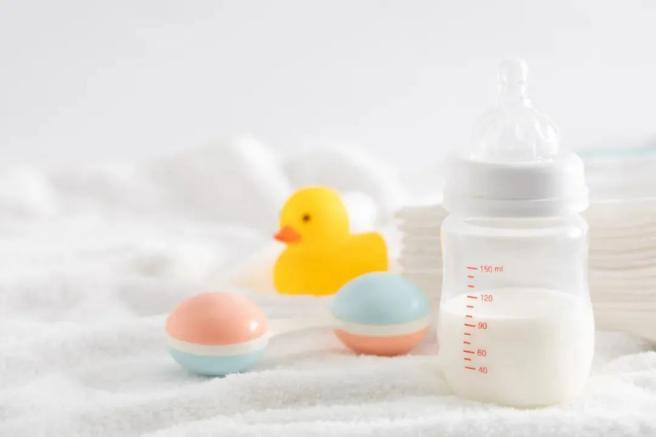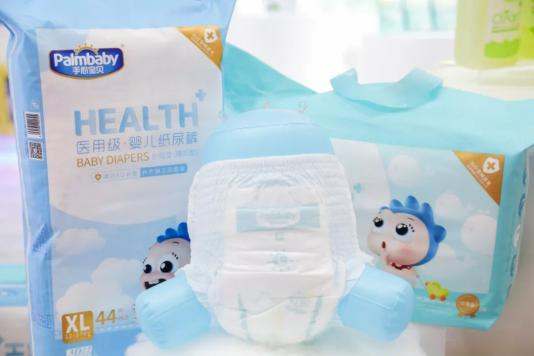Industry News: The maternal and infant market is struggling to 'climb up'
Industry News: The maternal and infant market is struggling to 'climb up'
The current consumption volume of the maternal and child market in China is stabilizing, and to maintain the previous high growth, 'price for quantity' has become the only viable approach, which is also the root of the comprehensive high-end transformation of the maternal and child industry. Over the past three years, the discussions on consumption upgrades in various sub-sectors have started to be re-examined, and only the maternal and child industry seems to have 'climbing up' as the only way out.

The maternal and child industry belongs to a comprehensive consumption industry, which can be divided into two main categories: 'goods' and 'services'. Goods are further divided into food (milk powder, complementary foods, etc.) and daily necessities (consumables, durable goods), while services cover education, medical care, entertainment, travel, and other aspects. In the past few years, different directions of consumption upgrades have emerged in these sub-sectors. The food sector emphasizes scientific formulas and nutritional safety, while the product sector highlights functional innovation and scenario segmentation. Additionally, product trends include high appearance value, intelligence, and convenience.Although the evolution directions are different, they all promote the high-end development of maternal and child products without exception.
Therefore, despite the overall stabilization of the user base, the maternal and child market continues to grow. Data from the Maternal and Child Research Institute shows that from 2020 to 2022, the year-on-year growth rates of the Chinese maternal and child market were 10%, 10%, and 9% respectively, and it is expected that the market size will exceed 5 trillion yuan in 2023. For today's new-generation parents, in the current context where many consumption concepts are changing, the traditional idea of 'even if I suffer, I cannot let my child suffer; even if I'm poor, I cannot skimp on education' still plays a dominant role and has become the underlying driving force for the high-end transformation of the maternal and child market.
'Conceiving' requires caution, 'raising' requires meticulous care, and while my consumption can be downgraded, my child's cannot. Only after becoming parents can we truly appreciate how seemingly 'IQ tax' maternal and child products are a necessity for babies. Take skincare as an example: skincare for adults is essentially for beauty, while a baby's skin is delicate and skincare is to ensure their skin remains undamaged. The latter is more of a necessity than beauty, leading to the emergence of new product categories that are vastly different from adult skincare. Take diaper rash cream, for instance. This is a product that is unlikely to appear in the world of adults, as its 'usefulness' is in areas that most adults prefer not to openly display. From the perspective of adults, this product is not even 'icing on the cake'. However, diaper rash cream is a necessity for babies. According to professional doctors, diaper rash cream can form a protective film on the surface of a baby's buttocks, preventing urine from directly irritating the skin and preventing diaper rash. In addition, diaper rash cream also contains antibacterial and anti-inflammatory ingredients, which can effectively soothe the skin.
The direct manifestation of the continuous upgrading of parenting experiences is the establishment of higher prices. Taking diapers as an example, a white paper on infant diapers consumption in China published by iResearch in 2022 mentioned that consumers who purchase infant diapers priced below 2 yuan accounted for about 38.3%, while consumers who expect to purchase diapers below 2 yuan in the future accounted for 47.6%. Thus, it is evident that the current unit price of infant diapers is higher than the expected price of consumers.
Although it is a well-known fact that children have become 'gold swallowers,' it has not deterred parents from making hefty investments. According to the '2023 Research Report on New Maternal and Child Consumer Groups in China,' compared to 2022, more than 50% of maternal and child consumers will increase their expenditures on maternal and child-related expenses. It is important to note that these parents are not blindly investing everything for their children; the aforementioned report mentioned that 68% of parents during the pregnancy and childbirth period are stressed about finances, and spending money wisely is their bottom line. Therefore, what makes these highly professional and cost-effective parents willingly pay high prices ultimately lies in the upgraded maternal and child products that they feel are worth the investment.

Diapers continue to upgrade. Consumers have higher requirements for the performance of infant diapers, with a focus on absorption, fit, and comfort.This has driven companies to innovate and upgrade in terms of material technology, functional scenarios, and more. For example, Luvs has launched the 'Day and Night Microclimate' series of diapers to further target the high-end market, while Kao has upgraded materials and formulations to introduce a high-end series of diapers to solve the problem of baby diaper rash.
With the upgrading of consumption, maternal consumption is on the rise. Although maternal and child consumption upgrades are a general trend, against the backdrop of overall slowing income growth, what brands see as 'high-end' may just be 'high-priced' in the eyes of consumers. The debate on whether products are 'IQ tax' continues unabated, which on one hand increases consumer professionalism, and on the other hand, forces the industry to move towards a more correct path. Compared to the previous generation of 'sacrifice-oriented' mothers, the new generation of mothers not only cares about their children's needs but also begins to focus on themselves. In a sense, the emergence of maternity and baby consumption itself is a manifestation of the consumption upgrade of the maternal and child market. The dual roles of mothers and women endow the maternity and baby track with broad consumption space. When they take on the role of expectant mothers, categories such as maternity products, breastfeeding products, maternal nutrition products, and postpartum education emerge. When they return to the role of women, categories such as maternity yoga/fitness and maternity makeup/skincare emerge. According to the '2022 Maternal and Child Industry Insight Report,' 40% of mothers said they would continue to use makeup during pregnancy, and first-tier cities and post-90s mothers pay more attention to purchasing additive-free beauty and skincare products, with an average spending of up to 2506 yuan. Focusing on the present, maternity and baby consumption should pay more attention to the emotional issues of women during pregnancy and postpartum periods, ensuring functionality while enhancing the experiential aspect.

The current consumption volume of the maternal and child market is stabilizing, and to maintain the previous high growth, 'price for quantity' has become the only viable approach, which is also the root of the comprehensive high-end transformation of the maternal and child industry. However, it is important to be vigilant. When brands collectively pursue a high-end strategy, it is difficult for the consumer end to completely align. In other words, as the industry 'looks up,' the needs of low-income groups are often overlooked. Even though brands will still maintain low-end product lines, when the focus starts to shift upward, the low-end product lines may become marginal or even drag on performance, and related safety issues are inevitable. Unlike other industries, maternal and child products are all necessities. Even low-income families must use maternal and child products. How to ensure the basic needs of low-income families for maternal and child products spans across the industry's path of high-end transformation. As the industry breaks its head to 'climb up,' it also needs to bend down.




